A few days ago I posted dark-field histograms from uncompressed files made with version 2 firmware running on the Sony a7II. Yesterday, I posted compressed and uncompressed read noise and engineering dynamic range plots for the a7RII running version 2 firmware.
Today’s post is of dark-field histograms from the a7RII, both compressed and uncompressed. The low-ISO ones are unsurprising and were posted earlier. Now I’m posted the higher-ISO ones.
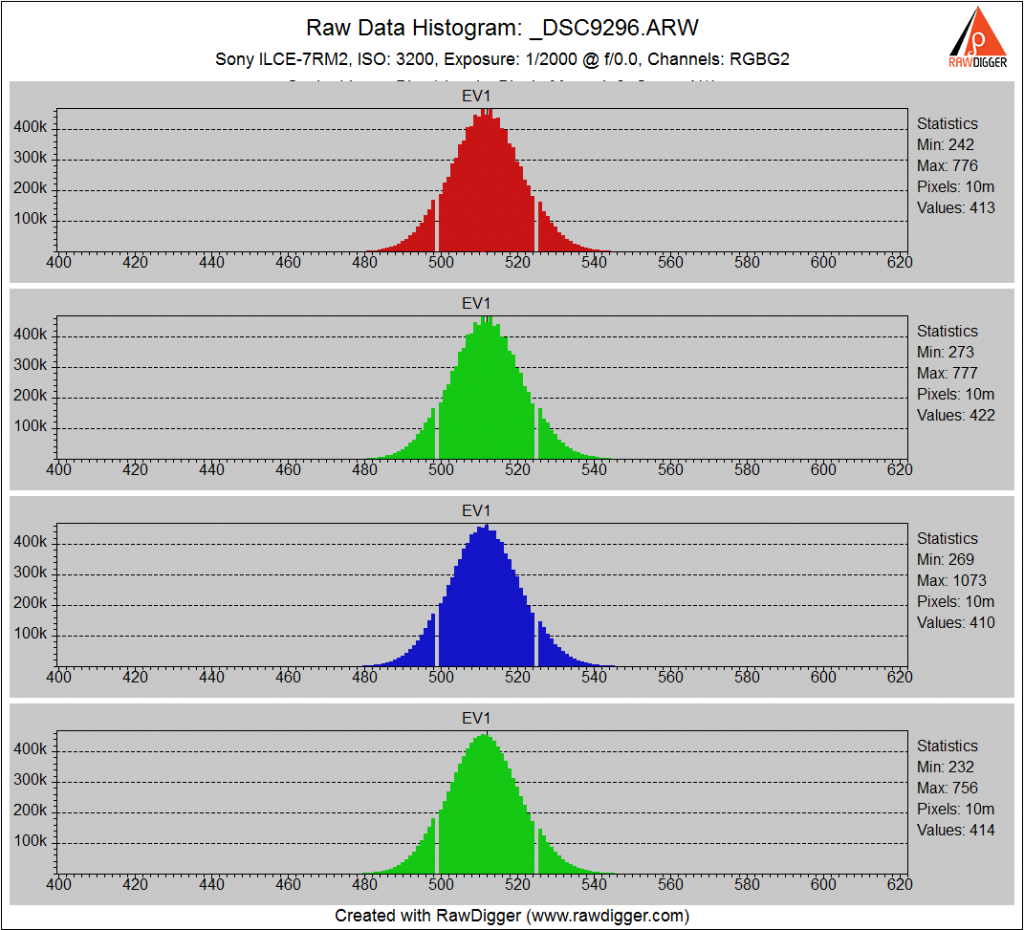
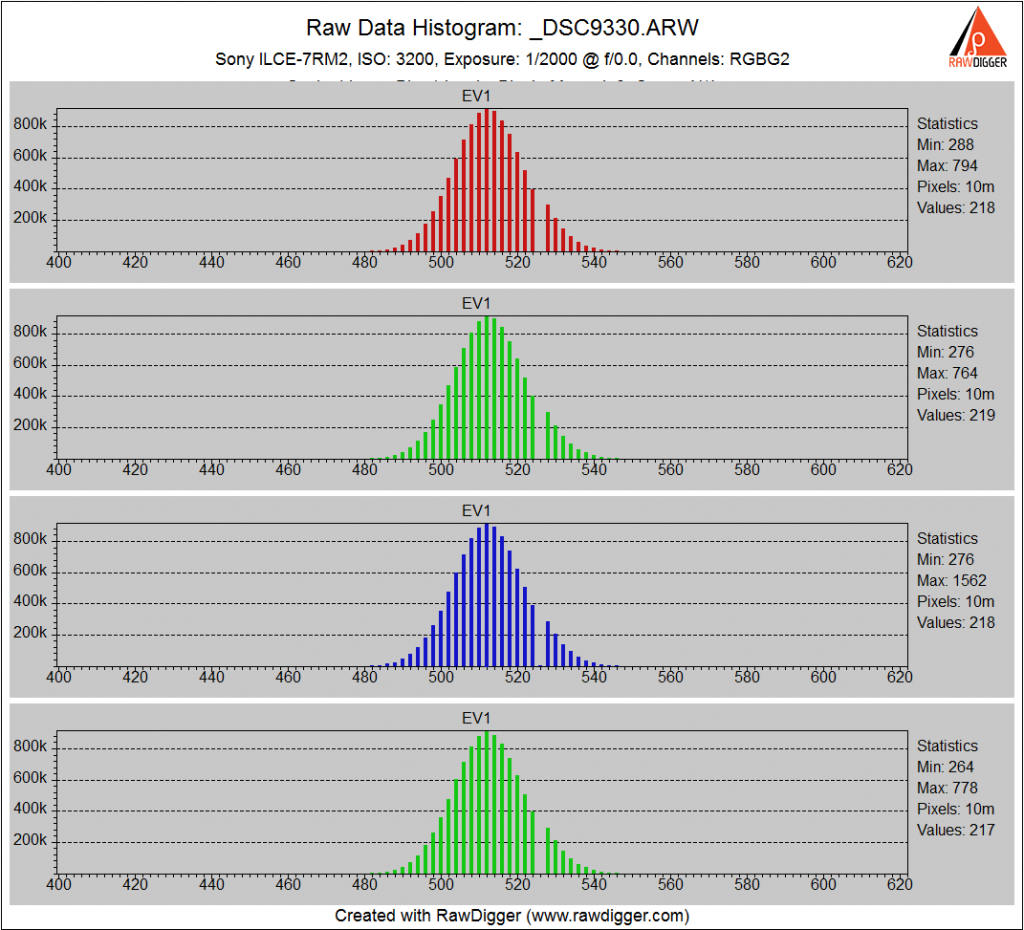
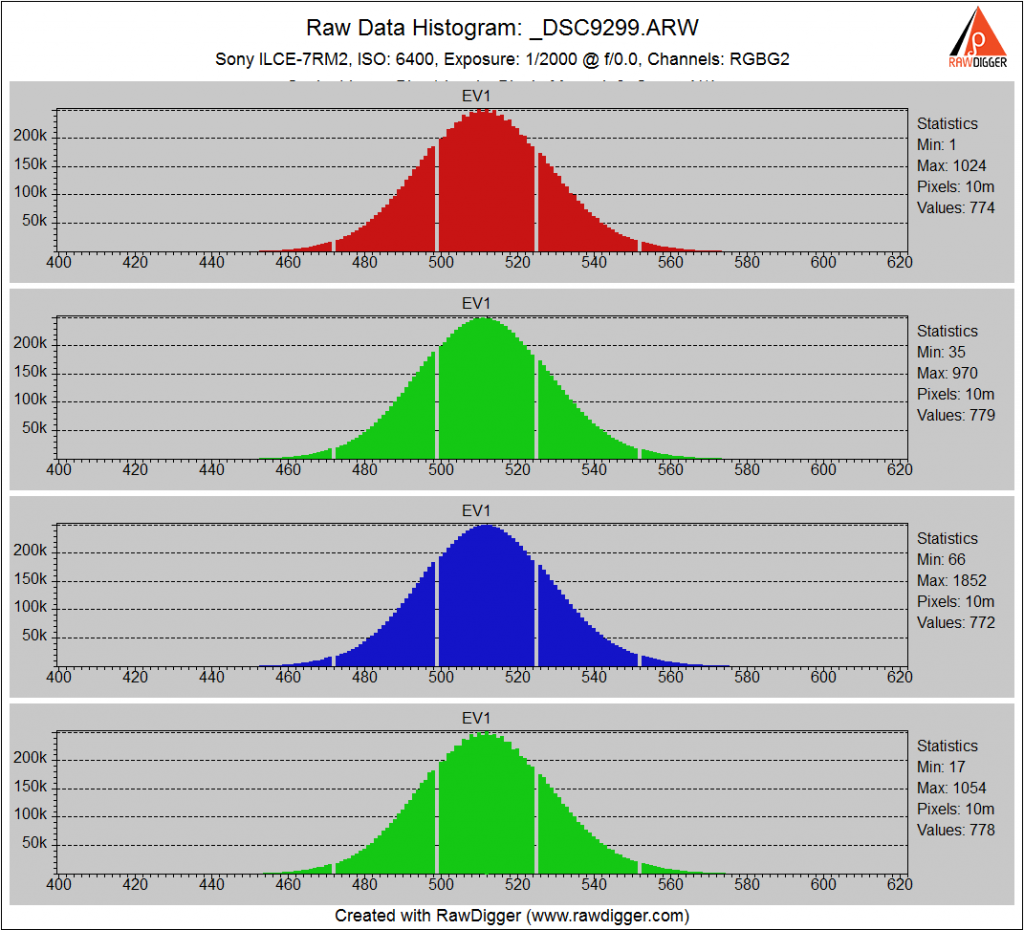
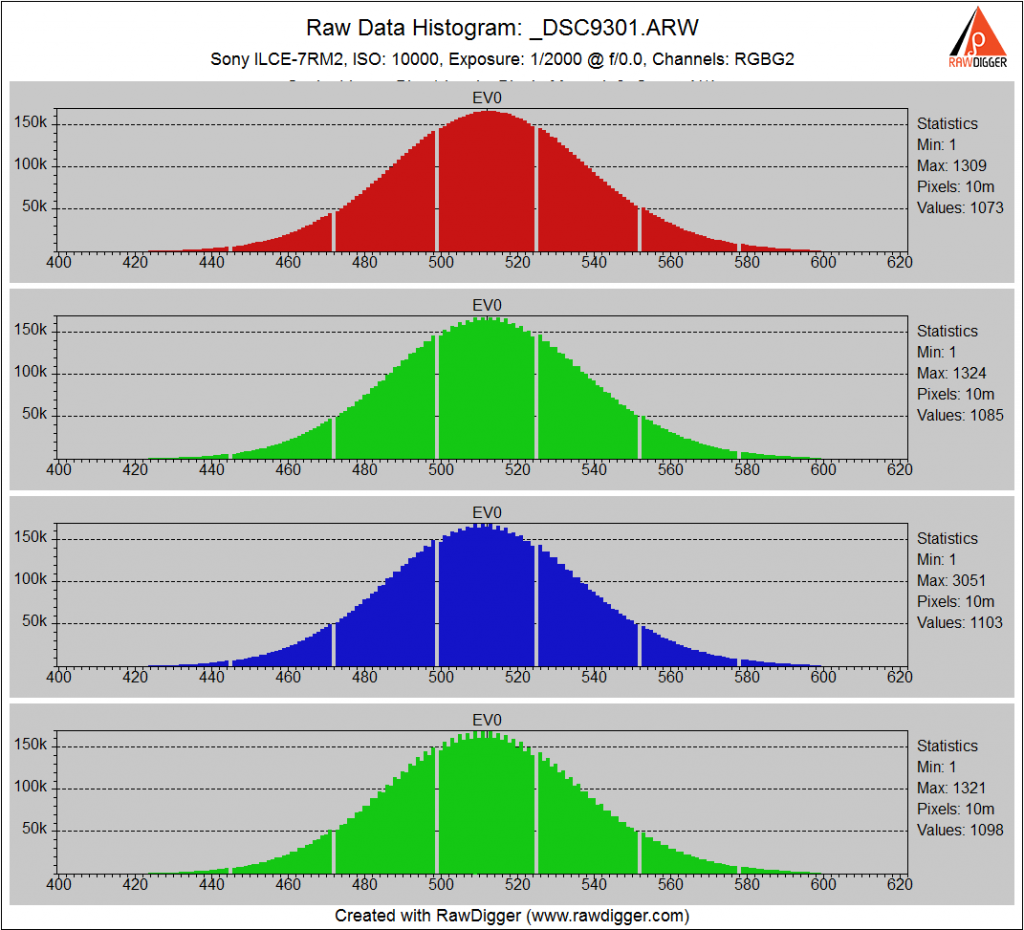
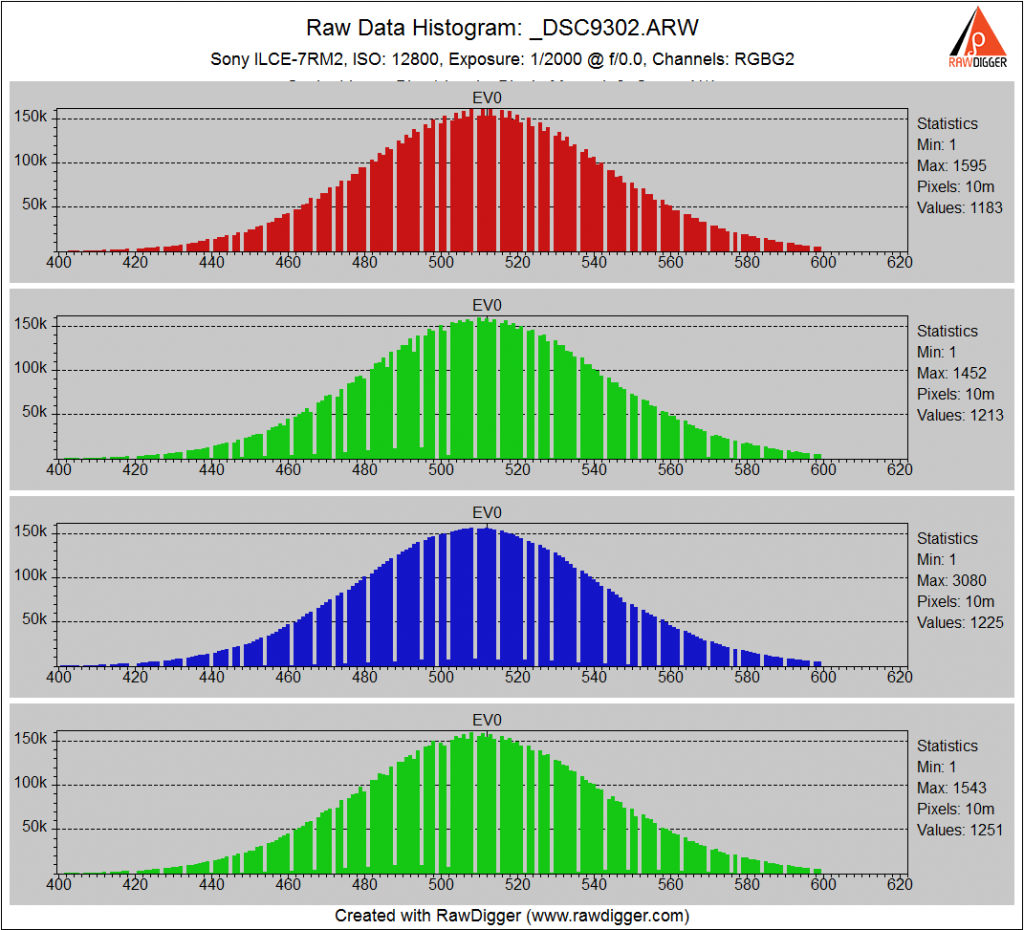
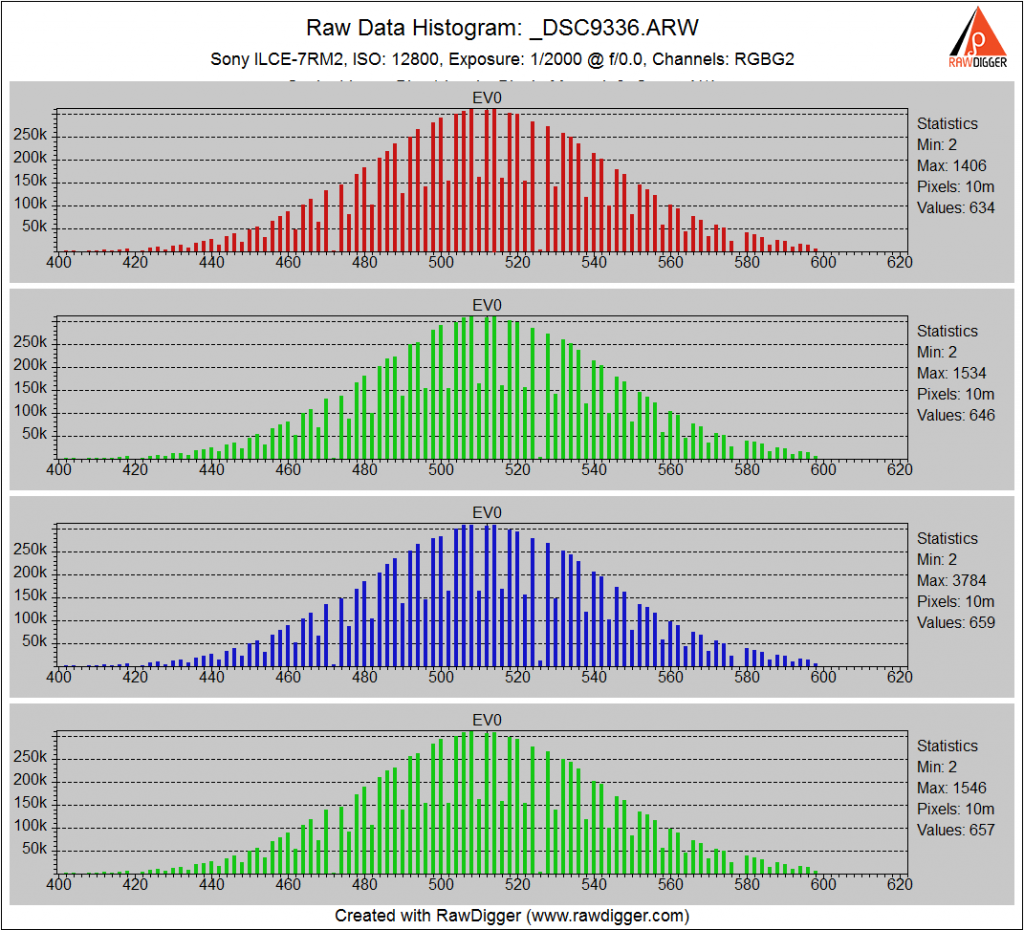
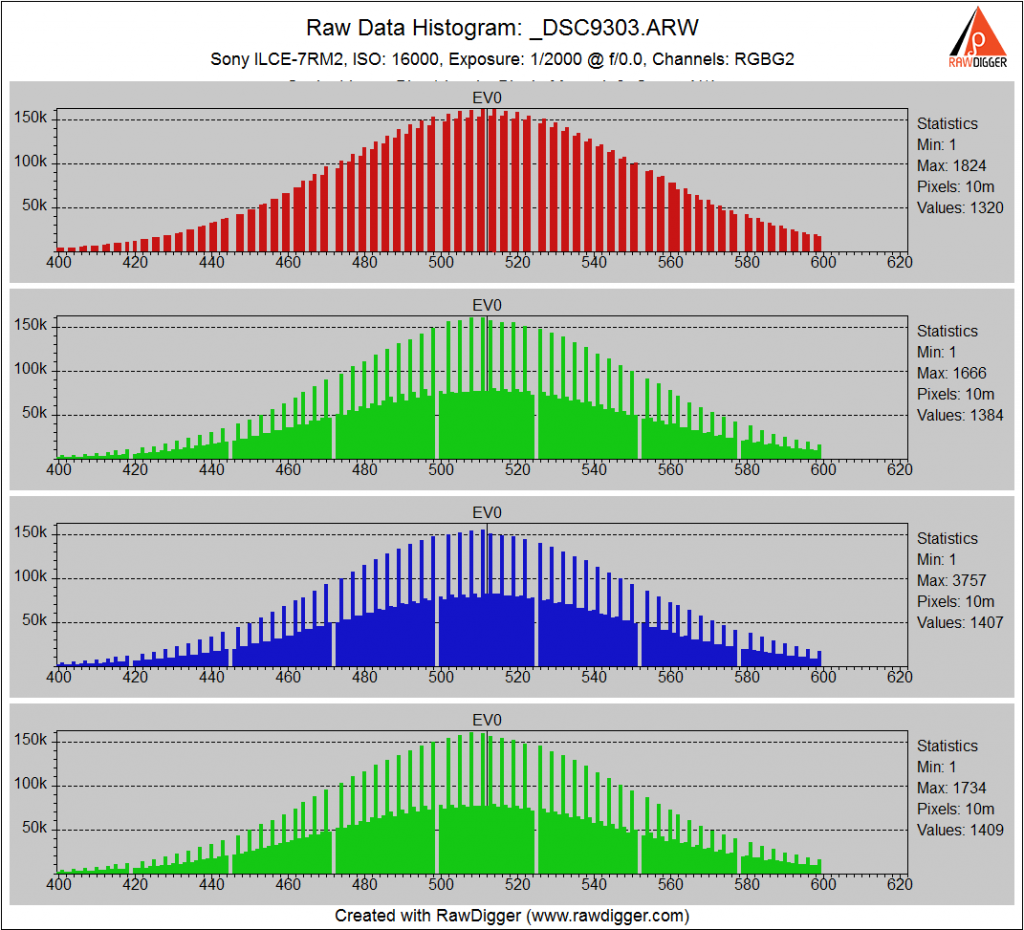
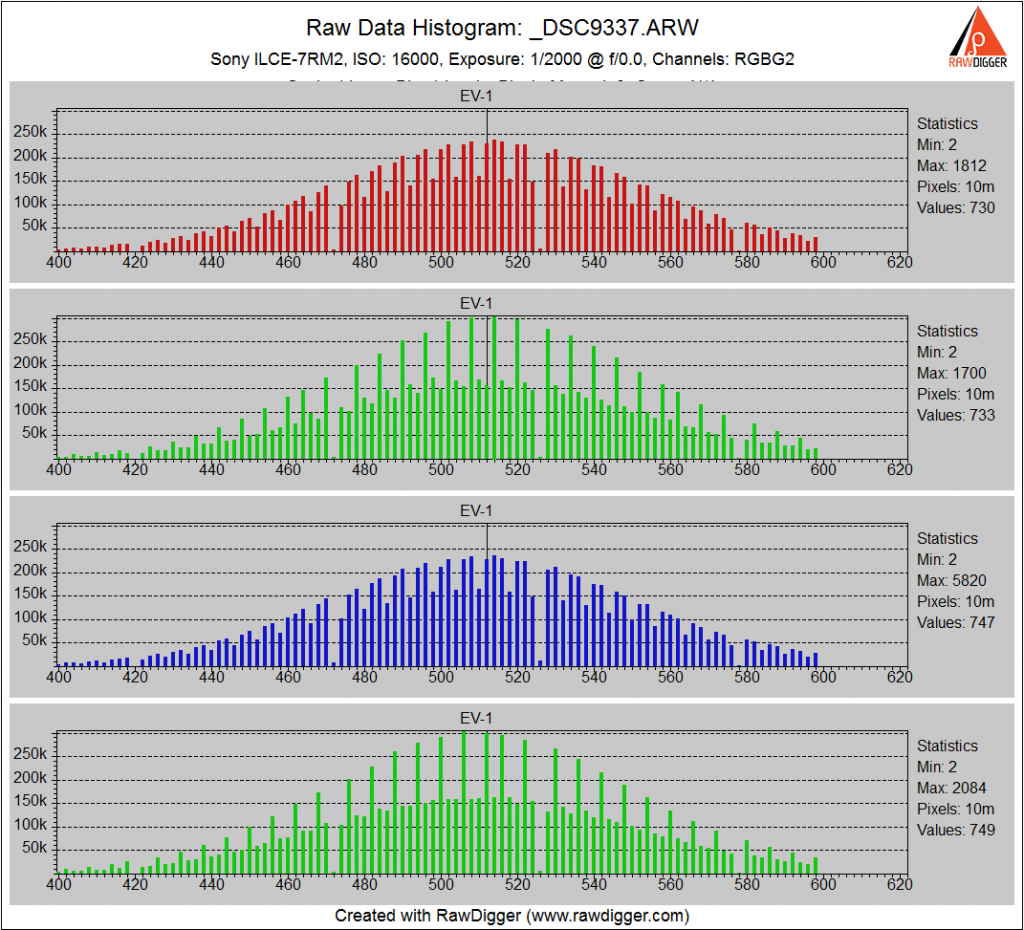

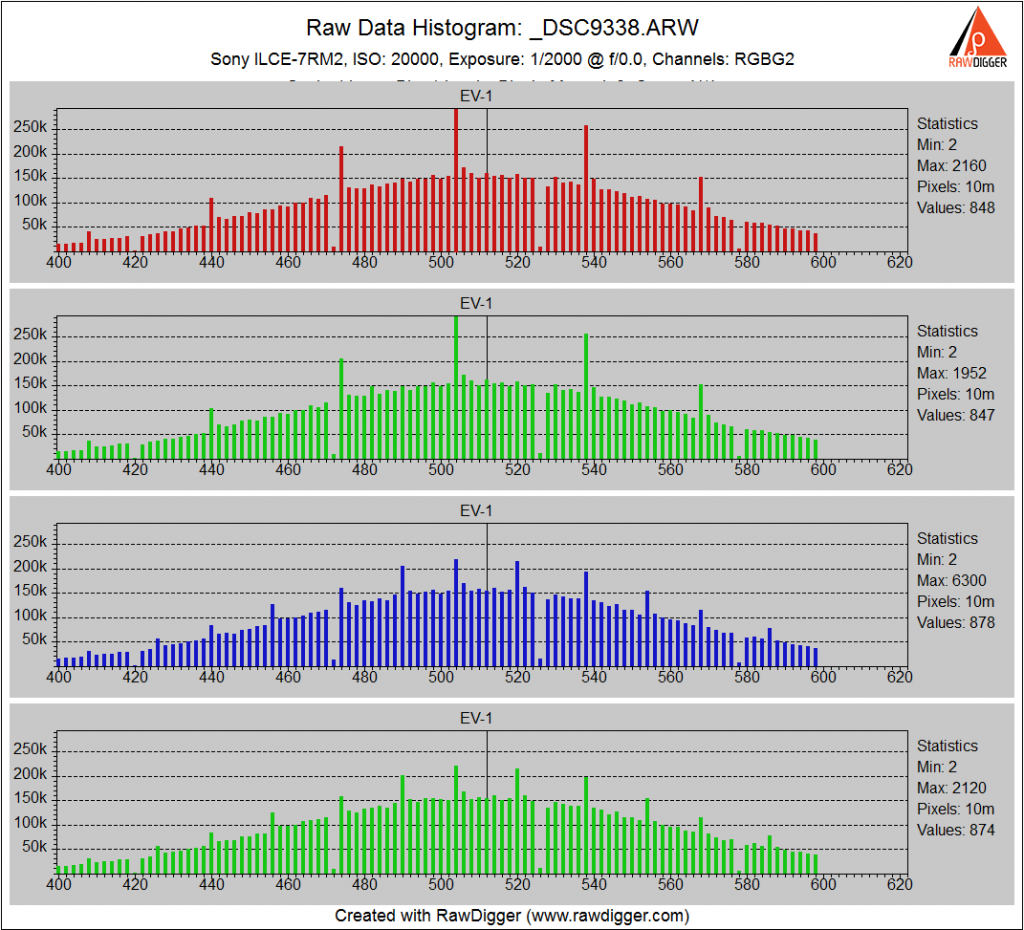
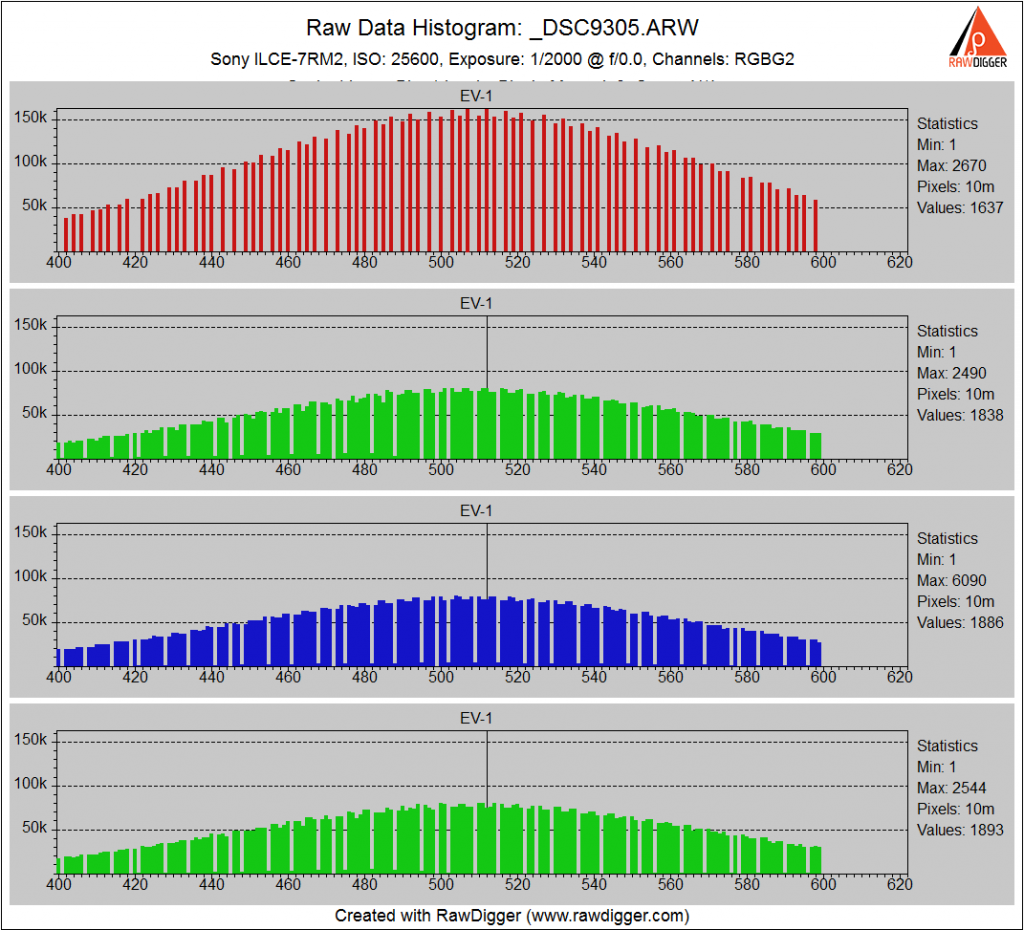
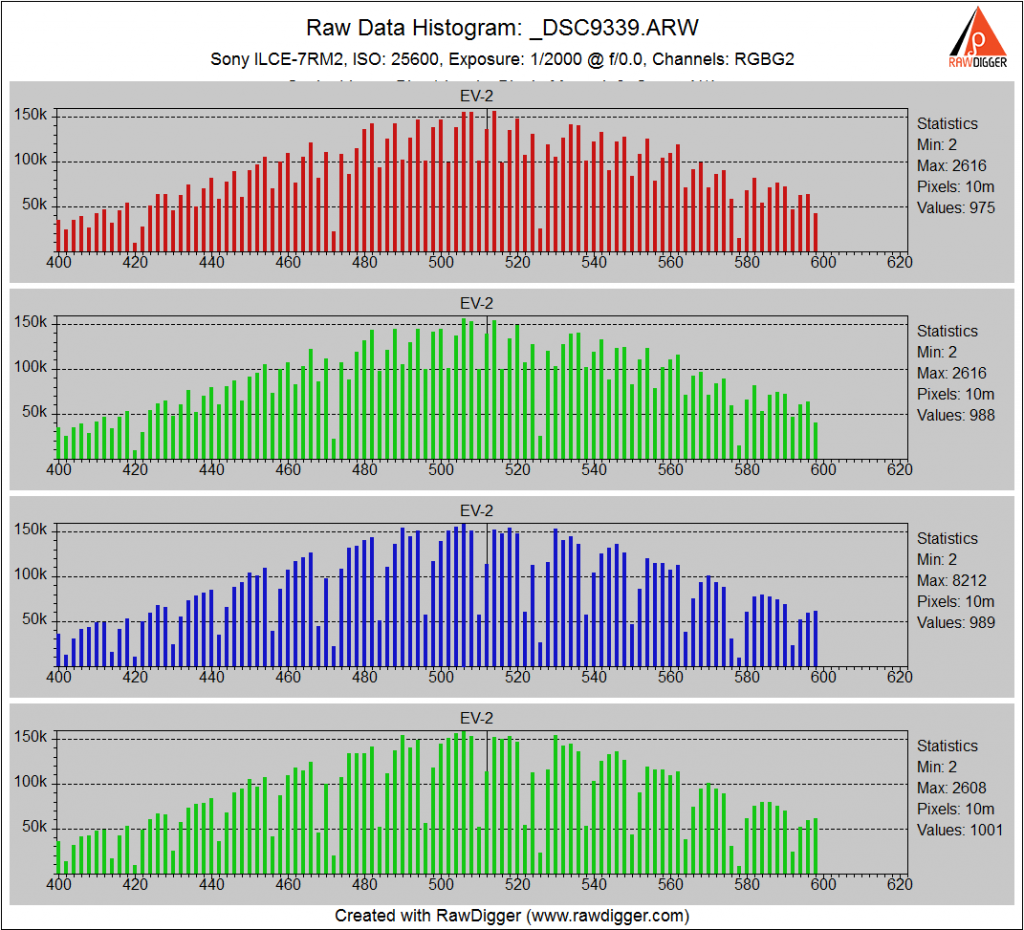
Now we get to the ISOs where Sony does digital noise reduction.
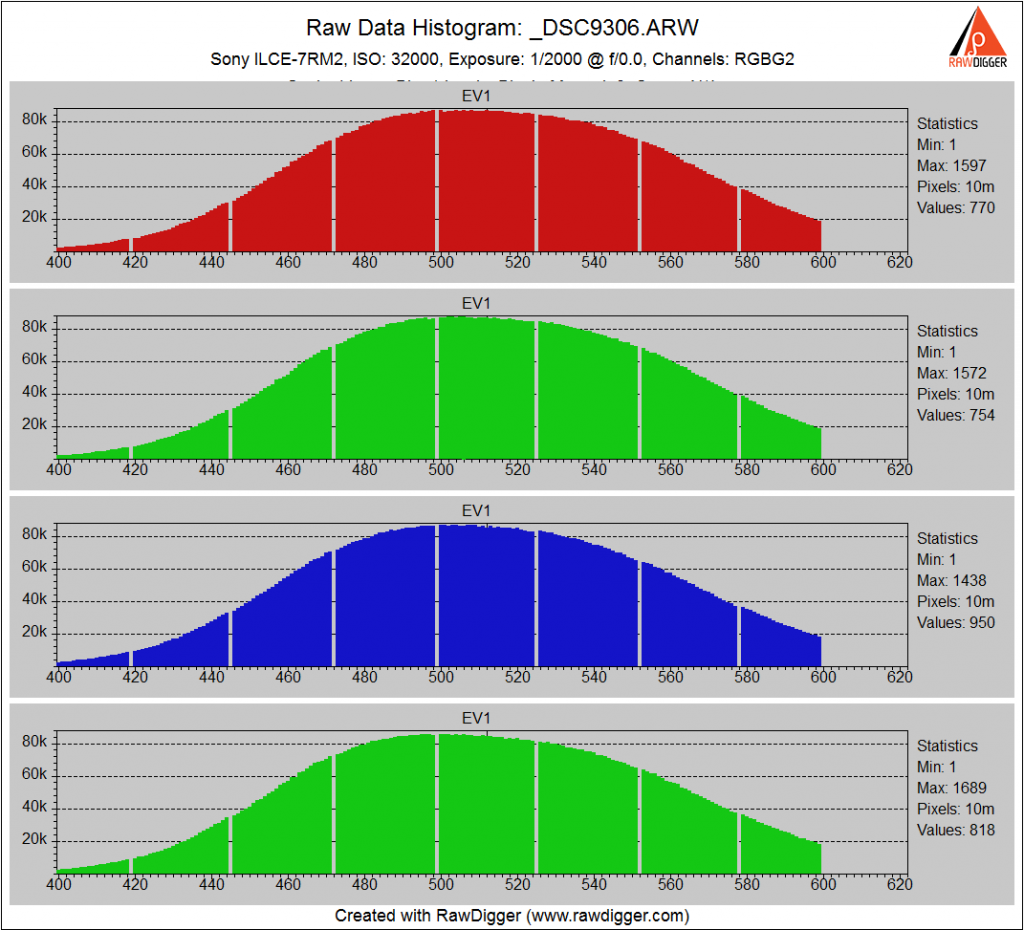
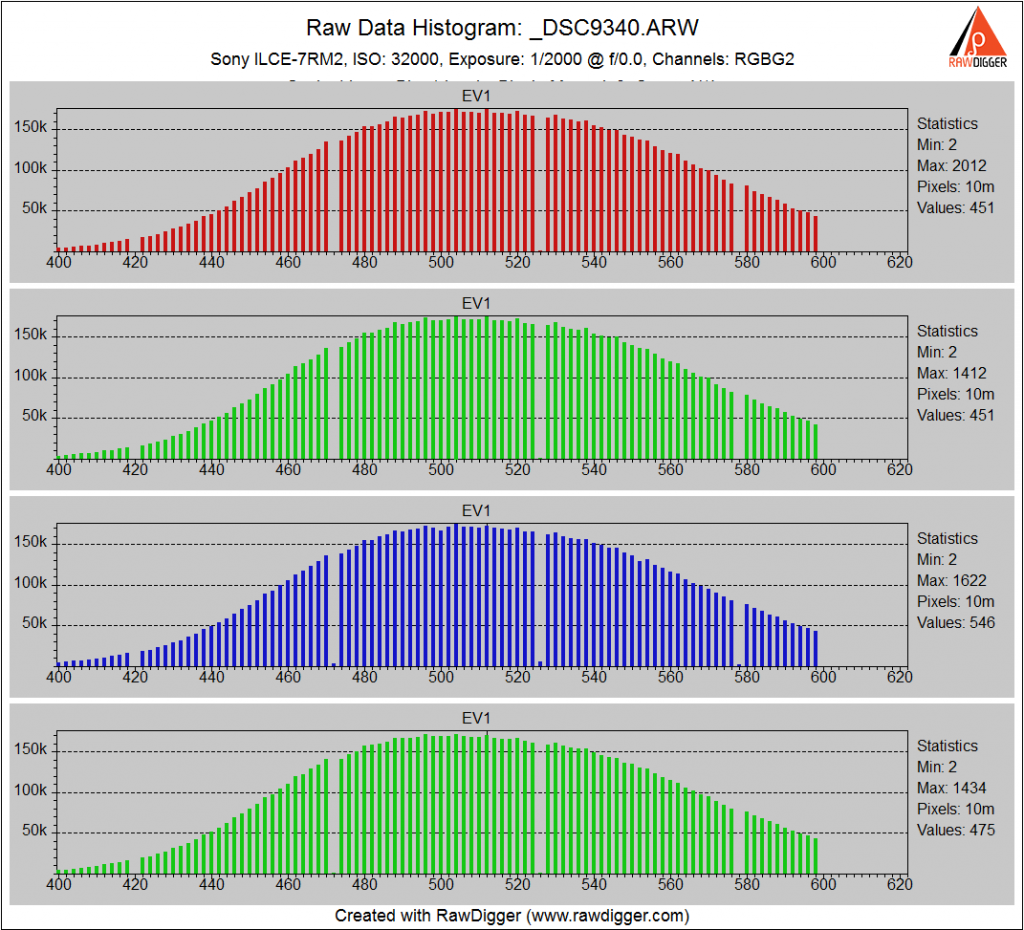
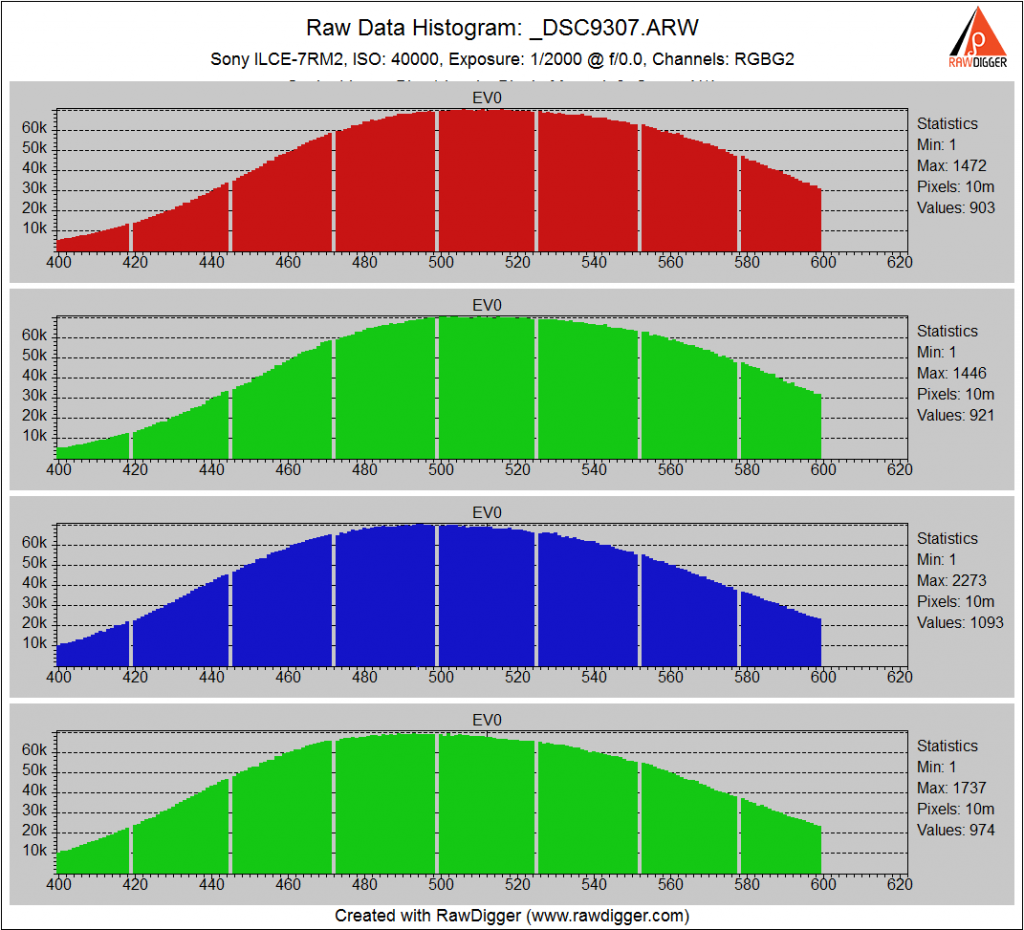
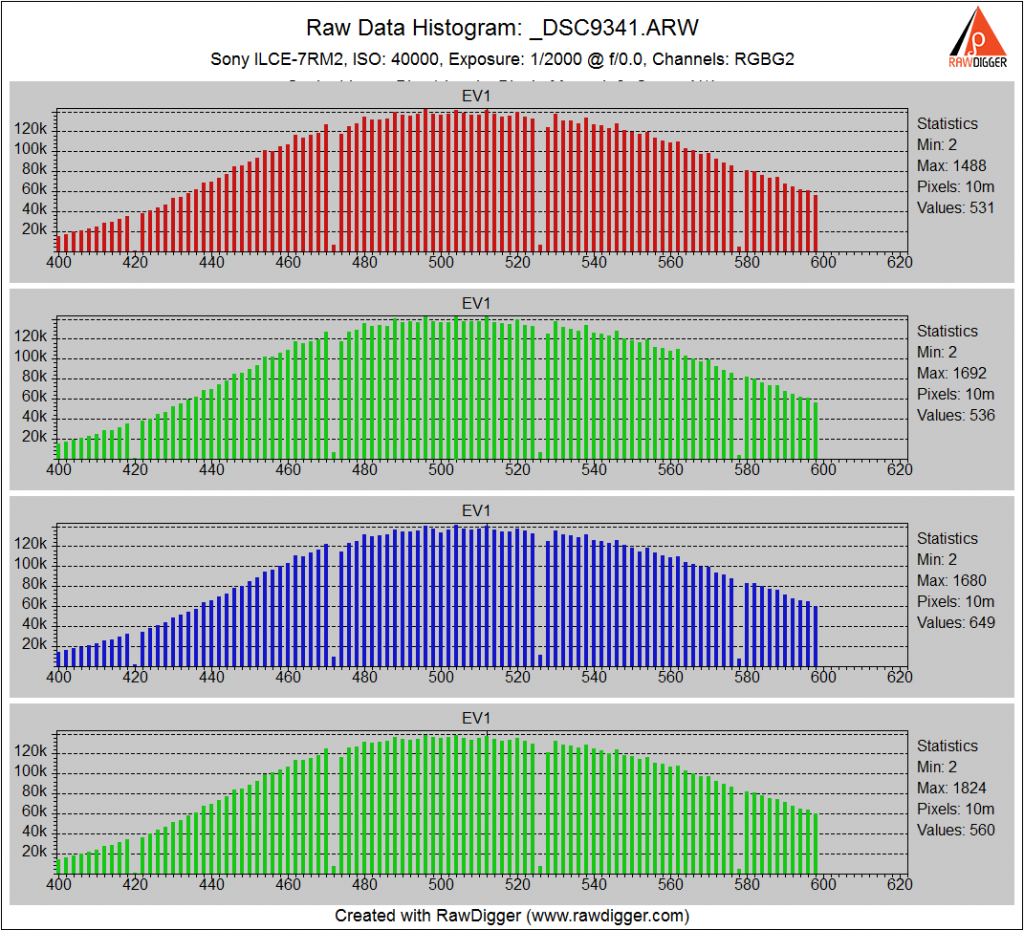
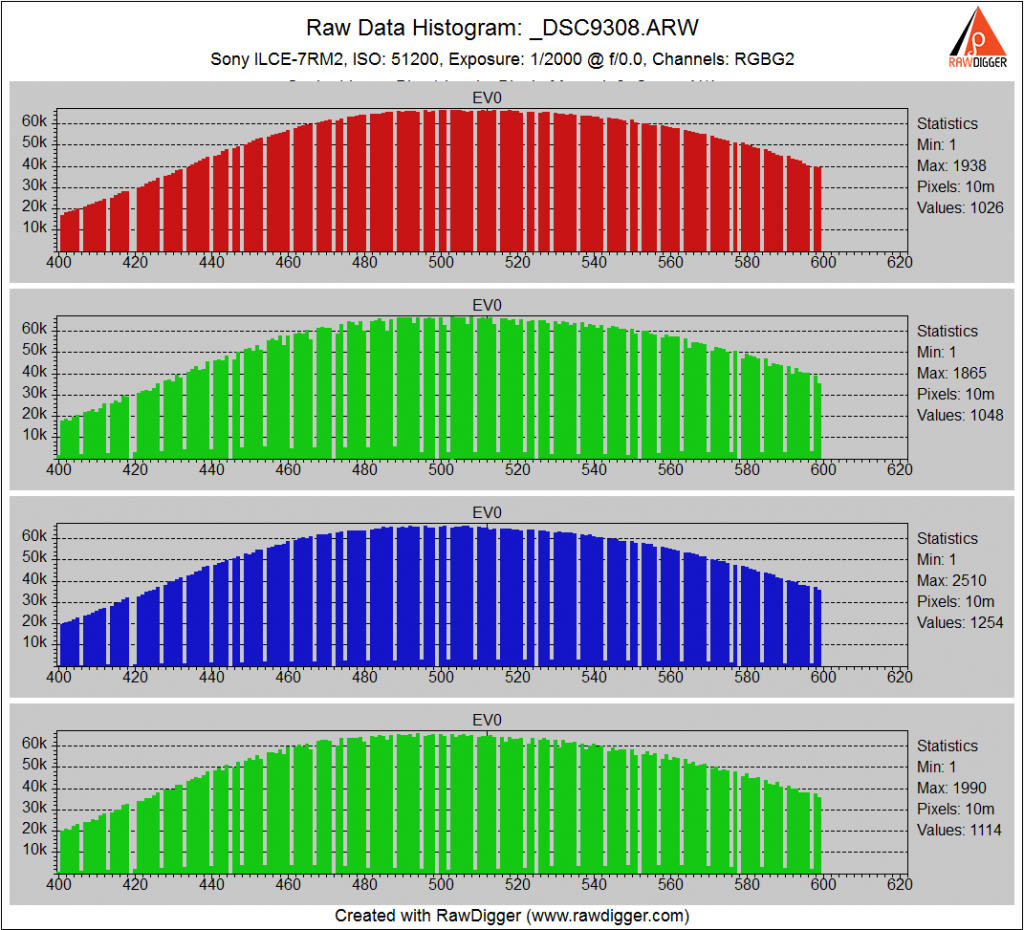
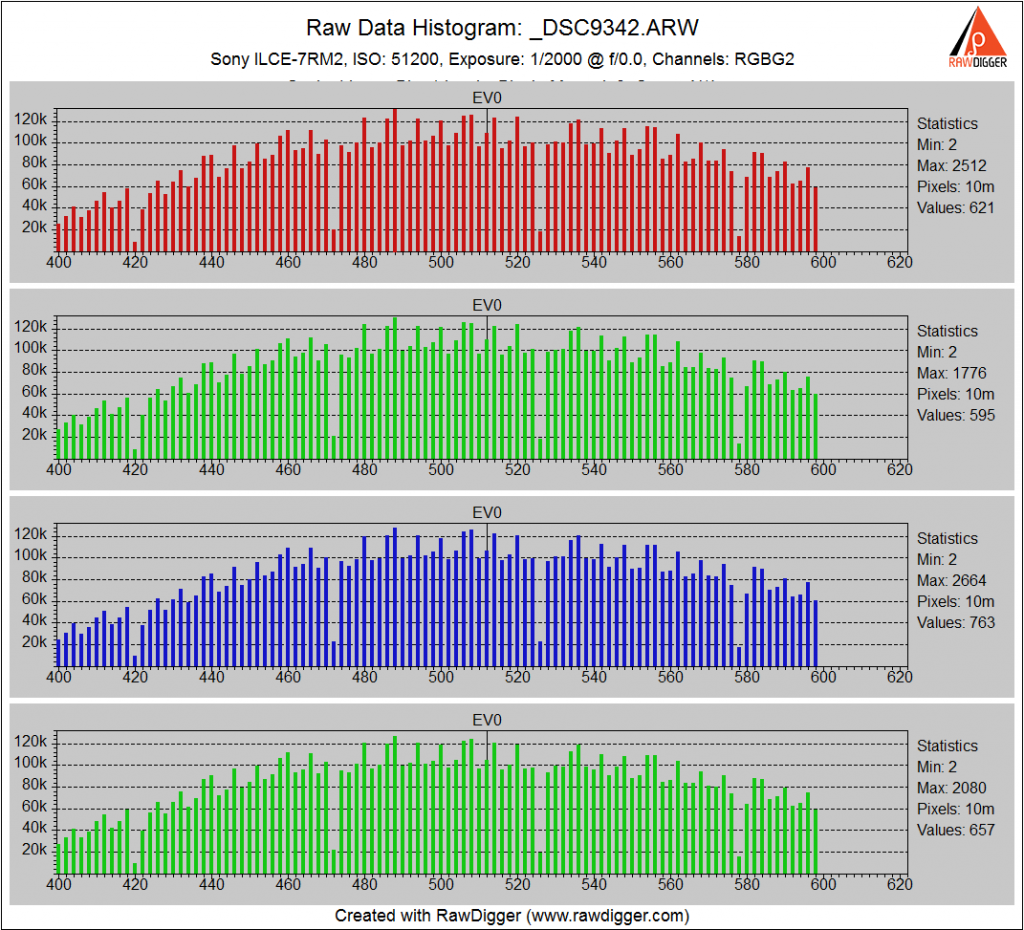
Unless there is interest in the nosebleed ISO, I think I’ll stop here.
The departures from ideality, while interesting, will have no effect on normal photography, since there is plenty of read noise dither.
Uncompressed: there appears to be one level missing every 26, which would suggest digital scaling post ADC by about (1+1/26). Below ISO10000 it’s probably just compensating for slightly lower analog gain. Above ISO 10000 there is some other digital scaling before x (1+1/26) is applied. This additional factor seems to get back in sync at ISO40000. With a bit of thinking one could figure out what it is.
The interesting implication of this digital scaling is that the Black Level should shift with ISO. Does it? 🙂